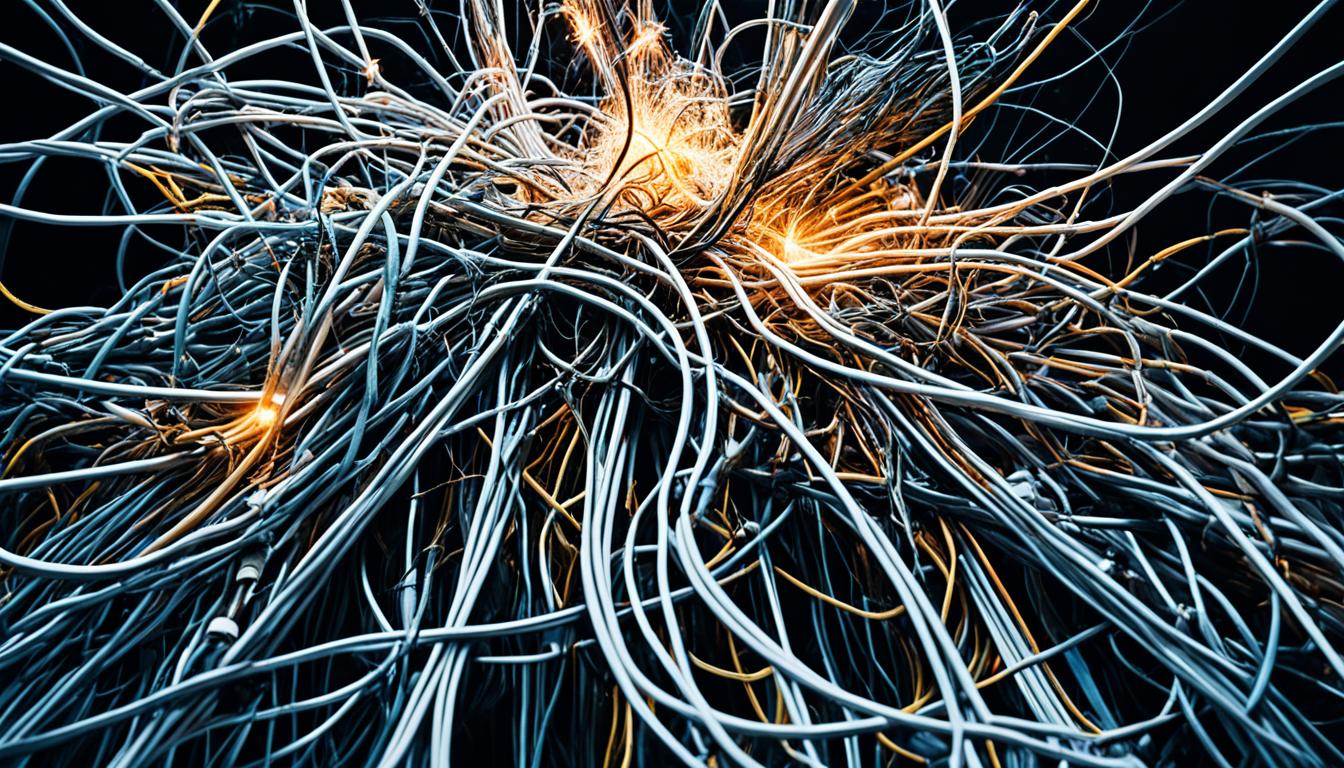Congenital myasthenic syndromes (CMS) are a group of inherited neuromuscular disorders that happen from birth. They lead to muscle weakness. About 1 in 150,000 people worldwide have this rare disease.
This disease starts showing symptoms by the age of 3. These symptoms can be floppy muscles, trouble with eating and breathing, and delayed motor skills. Some common signs are droopy eyelids and lung issues. The seriousness of CMS can vary. In some, it can be life-threatening. A clear genetic diagnosis is key to handling CMS well.
Key Takeaways:
- Congenital myasthenic syndromes (CMS) are inherited neuromuscular disorders characterized by muscle weakness.
- Symptoms of CMS usually appear before the age of 3 and can include floppiness, feeding and breathing difficulties, ptosis, and delayed motor milestones.
- CMS is a rare disease, affecting only about 1 in 150,000 people worldwide.
- Genetic testing is crucial for an accurate diagnosis of CMS and helps determine the appropriate treatment approach.
- Stem cell therapy is an emerging treatment option for CMS that shows potential in improving muscle function and reducing symptoms.
Diagnosis and Treatment of Congenital Myasthenic Syndromes
Diagnosing CMS involves looking at symptoms, doing a careful check-up, and running tests. The main test is genetic testing. This helps find the exact gene change that causes the disease.
Treating CMS means focusing on easing symptoms and making life better for those with it. This includes helping with breathing, eating, and movement. Doctors might also give medicines to boost muscle power.
If the disease comes from a specific gene problem, there might be treatments just for that. Stem cell therapy is a new and very interesting option. It works by trying to fix the damaged muscles. Thailand is a leader in offering this therapy. They have great medical services and experts who know a lot about CMS.
Stem Cell Therapy for Congenital Myasthenic Syndromes
Stem cell therapy is a new and advanced way to treat CMS. It uses special cells to try and repair the muscles. These cells can turn into different types of cells, which is key for helping with CMS.
Thailand is a top choice for getting stem cell therapy for CMS. It’s known for its high-quality medical care and groundbreaking work in this field. Patients get to be with highly skilled doctors and enjoy Thailand’s famous warm welcome.
In the end, diagnosing and treating CMS needs a detailed process. Stem cell therapy from Thailand offers hope for better treatment. As research in this area grows, so does the chance for a brighter future for those with CMS.
Future Directions and Conclusion
Ongoing CMS research aims to understand congenital myasthenic syndromes better. Scientists are searching for new genetic mutations linked to the condition. This search will help create targeted therapies and precision medicine suited to each person’s unique genetic makeup.
Advances in treatment include stem cell therapy and gene therapy. They offer hope for better outcomes in CMS patients. These new treatments could enhance muscle functioning, lessen symptoms, and boost the quality of life.
Getting an accurate genetic diagnosis is key for CMS patients. Typically, most children with CMS can walk independently. Their cognitive function and development is usually not affected. Although the disability’s impact on life and movement can differ, early action and personalized care greatly help. To choose well and get the best support, staying updated on research and treatments is crucial for families.

